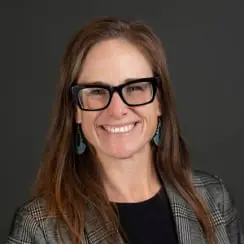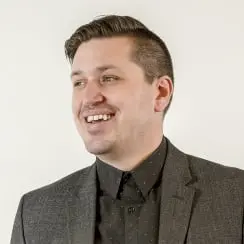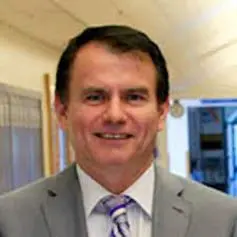 | 1 LU | HSW |
 | 1 LU | HSW |
Call to Action: Can “design by committee” truly work? It has to. This project’s governance model is designed to feed all voices, input, and opinions directly into experiential outcomes for a new building. The new Health Science High School in Aurora, Colorado harnesses a diverse set of voices through a multi-level governance structure to guide all stakeholders input in a swift, precise, and actionable manner to deliver a new secondary education facility that aims to close skill-gaps in the health care industry, fortify the local economy, and bring prosperous outcomes to students across the district. Here are three action takeaways for attendees:
Abstract: We know skills-based career education offers an array of on- and off-ramps for students to customize a career suited to their individual power. Harnessing student, parent, community, and employer interests that live in those intersections has the power to propel our communities into more prosperous futures. Finding those intersections is the challenge, and the opportunity. How can districts and designers organize and harness new models of engagement to create building programs for their communities? The Health Science High School at Aurora Public Schools hopes to fill a workforce gap in a flourishing industry with intense skills needs: Healthcare. After proposing and passing a new bond initiative in 2024, Aurora Public Schools seeks to develop a high school with 5 distinct yet interconnected healthcare pathways in collaboration with health systems and community college partners that brings together educators, planners, facilities, designers, and the community in a Governance Structure that will guide the programming, education, space design and outcomes of students in Aurora, Colorado. This process model can be used as a guide for other communities who are looking to grow or expand their education offerings into swift action and response, fortifying their districts and communities.
Learning Objectives:
Educational Visioning
Facilitating the translation of educational goals / vision into school design requirements.

Marianne is the Strategic Development Advisor for Aurora Public Schools, where she leads the long-term educational and facilities plan and supports district-wide systems development. Marianne has over 20 years of experience in K-12 urban education. She is passionate about the role of public education in advancing equity and disrupting systemic educational barriers for historically marginalized students and families. She lives in Denver, CO, with her husband and two sons.

Sumegha is a Principal at Cannon Design’s education practice, leading the firm’s health education market. She brings over 18 years of global insights into K-12 and higher education, particularly the needs of cutting-edge medical and health science facilities, translating project vision into design solutions. Shah guides the development of learning environments for future professionals, integrating technology enhancements and fostering interdisciplinary and inter-professional education, community impact, and cultural collaboration.

As a Design Leader with CannonDesign, Michael is an architect focused on the complexities of daily life intersected with patterns of the urban condition, which he believes create new formulas for designing our future. He views his 20-year career as a crash-course in real world design solutions meeting big ideas and is persistently thinking about how design can positively change our social and cultural environments for an equitable and diverse future.

Noel is the superintendent of the newly consolidated Rock Ridge Public Schools District. Over his career, he has observed and participated in many school reform efforts, most of which failed spectacularly. However, the latest one, the merger of the Eveleth-Gilbert and Virginia school district and the community's decision to cooperatively build a new high school and two elementary schools, has been a spectacular success.